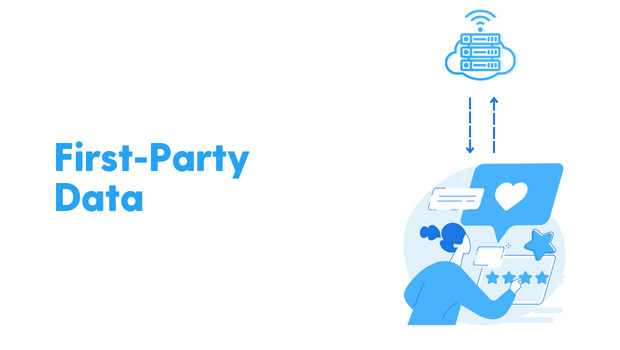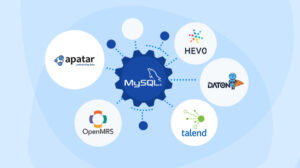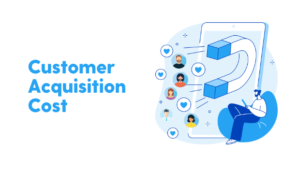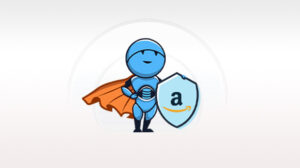First party data is data that is collected by a brand or company from its own customers and users. This can include data collected from online and offline interactions, such as website analytics, purchase history, email marketing data, and customer service interactions.
First party data is more valuable than data from other sources. This can provide a holistic and more accurate picture of the customer, as compared to data collected from external sources.
Brands can use first party data to improve their marketing and advertising efforts in a number of ways, such as personalizing the customer experience, segmenting customers into different groups, and informing product development and design.
How to Collect 1st Party Data
There are several ways that brands can collect first party data:
- Online interactions: Brands can collect data from customers’ interactions with their website, such as page views, clicks, and form submissions. This can be done using tools like Google Analytics.
- Purchase history: Brands can collect data on what customers have purchased, including the products, quantities, and prices. This data can be collected through online sales or through in-store point of sale systems.
- Email marketing: Brands can collect data on how customers interact with their email marketing campaigns, including whether they open the emails, click on links, or make a purchase.
- Customer service interactions: Brands can collect data through interactions with customer service, such as phone calls, emails, and live chats. This can provide insights into customer needs and preferences.
- Surveys and feedback: Brands can collect data by directly asking customers for their thoughts and opinions through surveys or other feedback mechanisms.
- Social media: Brands can collect data from customers’ social media profiles and interactions with the brand on social media platforms.
How to use First Party Data
There are many ways that brands can use first party data to improve their marketing and business operations. Here are a few examples:
- Personalization: First party data can be used to personalize the customer experience, such as by showing targeted ads or recommendations based on a customer’s past purchases or interests. Also, read – Predictive Analytics
- Marketing and advertising: First party data can be used to inform and optimize marketing and advertising campaigns. For example, brands can use data on customer behavior and interests to target ads more effectively or to test different marketing strategies. Also, read – Data driven Marketing
- Customer Segmentation: Brands can use first party data to segment their customer base into different groups based on characteristics like demographics, behavior, and interests. This can help brands create more targeted marketing campaigns.
- Product development: First party data can provide valuable insights into what customers want and need, which can inform product development and design. Brands can use this data to identify trends or gaps in the market and create products that meet those needs.
- Customer service: First party data can be used to improve customer service by providing a more complete understanding of individual customers and their needs. Brands can use this data to track customer interactions and identify opportunities to provide more personalized support.
- Customer retention: First party data can be used to understand why customers are not returning to make purchases and to identify opportunities to improve the customer experience and increase retention.
- Upselling and cross-selling: First party data can be used to identify opportunities for upselling and cross-selling, such as by recommending related or complementary products based on a customer’s past purchases.
- Fraud prevention: First party data can be used to help detect and prevent fraudulent activity, such as by identifying patterns of behavior that may indicate fraudulent activity.
- Inventory management: First party data can be used to inform inventory management decisions, such as by identifying trends in customer demand and forecasting future demand. Read more – Predictive Analytics
- Price optimization: First party data can be used to optimize pricing strategies, such as by identifying the price points that are most attractive to customers and by adjusting prices based on demand and competition.
How can DTC and Subscription Brands leverage 1st Party Data
Here are a few examples of how brands might use first party data in their marketing and business operations:
- A fashion retailer uses data on customers’ past purchases and browsing history to personalize product recommendations and email marketing campaigns.
- A food delivery app uses data on customers’ past orders and locations to suggest relevant restaurants and to optimize delivery routes.
- A beauty brand uses data on customer reviews and feedback to inform product development and to identify areas for improvement.
- A home decor company uses data on customer preferences and style to create personalized shopping experiences and to recommend products that fit a customer’s aesthetic.
- A fitness app uses data on users’ workouts and progress to provide personalized workout plans and to suggest relevant products and services.
Also, read:
Challenges in First Party Data
There are several challenges that you may face when working with first-party data:
- Data Quality: One challenge with first-party data is ensuring that it is accurate and complete. This can be difficult if you have a large and complex dataset, or if you are collecting data from multiple sources.
- Data Privacy: Another challenge with first-party data is protecting the privacy of your customers or users. You will need to be careful about how you collect, use, and store personal data, and ensure that you are in compliance with relevant laws and regulations.
- Data Security: Ensuring the security of your first-party data is also important. You will need to take steps to protect your data from unauthorized access or tampering, and ensure that it is backed up and recoverable in case of an emergency.
- Data Governance: Managing and organizing first-party data can also be challenging, especially if you have a large and complex dataset. You will need to establish clear policies and procedures for how data is collected, stored, and used, and ensure that everyone in your organization follows them.
- Data Integration: Integrating first-party data with data from other sources can also be difficult. You will need to ensure that your data is properly formatted and normalized, and that you have a system in place for keeping it up to date.
- Data Analysis: Finally, analyzing and making sense of your first-party data can be challenging, especially if you have a large and complex dataset. You will need to be skilled in data analysis and visualization and have the right tools and resources to help you understand your data.
Right Data Flow for Leveraging First Party Data
The data flow for first-party data will depend on the specific needs and requirements of your organization. However, here is a general outline of the steps that might be involved in collecting, managing, and analyzing first-party data:
- Data Collection: The first step in the process is to collect the data. This might involve using web tracking tools, such as Google Analytics, to collect data about website traffic, or using survey tools, such as SurveyMonkey, to collect data from customers or users.
- Data Storage: Once the data has been collected, it needs to be stored in a secure and organized manner. This might involve using a database, such as MySQL or MongoDB, to store the data, or using a data warehousing platform, such as Google BigQuery, to store and manage large datasets.
- Data Cleaning: Before the data can be analyzed, it may need to be cleaned and prepared. This might involve removing errors or inconsistencies, filling in missing values, or merging data from multiple sources.
- Data Analysis: Once the data has been cleaned and prepared, it can be analyzed using tools such as Excel, Tableau, or SQL. This might involve using statistical techniques, such as regression analysis or cluster analysis, to uncover patterns and trends in the data.
- Data Visualization: Data can be visualized using tools such as Data Studio, Domo, or Looker. This might involve creating charts, graphs, maps, or other visualizations to help you understand and communicate your findings.
- Data Sharing: Finally, the results of the analysis can be shared with others in your organization, or with external stakeholders. This might involve creating reports, dashboards, or other forms of communication to share your findings.
Also, read:
How to Manage and Analyze First Party Data
There are many tools that you can use to manage and analyze first-party data. Some popular options include:
- Google Analytics: This is a web analytics service offered by Google that tracks and reports website traffic. It’s a popular choice for analyzing first-party data because it’s free, easy to use, and integrates with many other Google products.
- Tableau: This is a data visualization tool that allows you to create interactive charts, graphs, and maps to help you understand and communicate your data. It’s a popular choice for analyzing first-party data because it’s powerful and flexible, and offers many different visualization options.
- Excel: Microsoft Excel is a spreadsheet program that is commonly used for managing and analyzing data. It’s a popular choice because it’s widely available and easy to use, and it has many built-in functions for data analysis.
- SQL: SQL (Structured Query Language) is a programming language used for managing and querying databases. It’s a popular choice for analyzing first-party data because it allows you to work with large datasets and perform complex analysis.
- Google BigQuery: This is a cloud-based data warehousing platform offered by Google. It’s a popular choice for analyzing first-party data because it’s fast, scalable, and easy to use, and it integrates with many other Google products.
- Data Studio: This is a data visualization and reporting tool offered by Google. It allows you to create interactive dashboards and reports using your own data, as well as data from other sources.
- Domo: This is a cloud-based business intelligence platform that allows you to connect to, analyze, and visualize your data from a wide range of sources.
- Looker: This is a data visualization and analytics platform that allows you to build custom dashboards and reports using your own data, as well as data from other sources.
- Power BI: This is a business analytics service offered by Microsoft that allows you to create interactive dashboards and reports using your own data, as well as data from other sources.
- SAP BusinessObjects: This is a suite of business intelligence and analytics tools that allows you to analyze and visualize your data, as well as create custom dashboards and reports.
These are just a few examples, and there are many other tools available that you might consider for analyzing first-party data. The right choice for you will depend on your specific needs and requirements.
Conclusion
Without a comprehensive view of the business data, brands don’t know who their most profitable customers are.
By tracking customer interactions, integrating data sources such as websites, ads, forms, PoS, and CRM in a data warehouse, and leveraging the consolidated data to build reports and dashboards, businesses can gain invaluable insights and drive growth.
Contact Saras today to know more.













